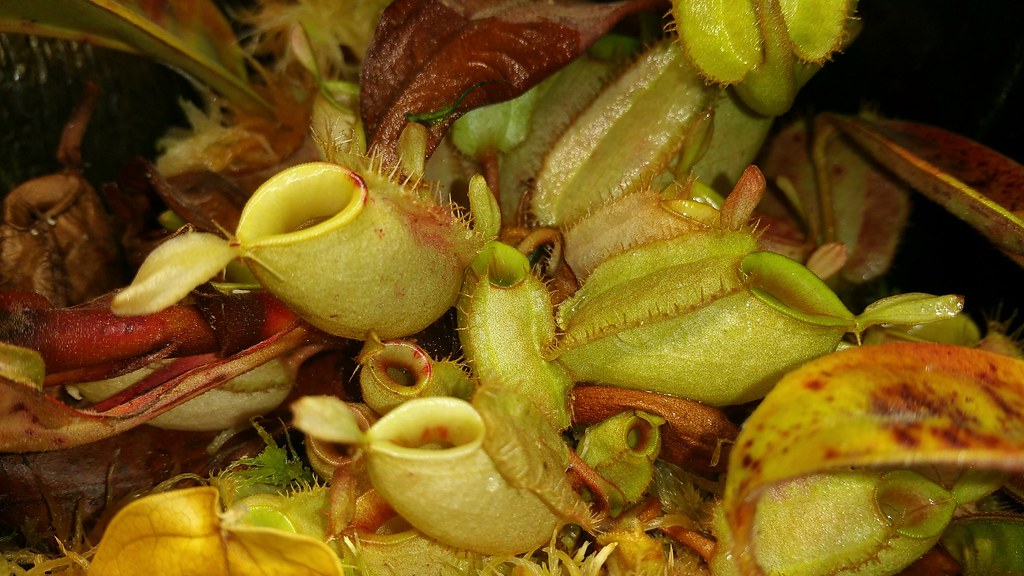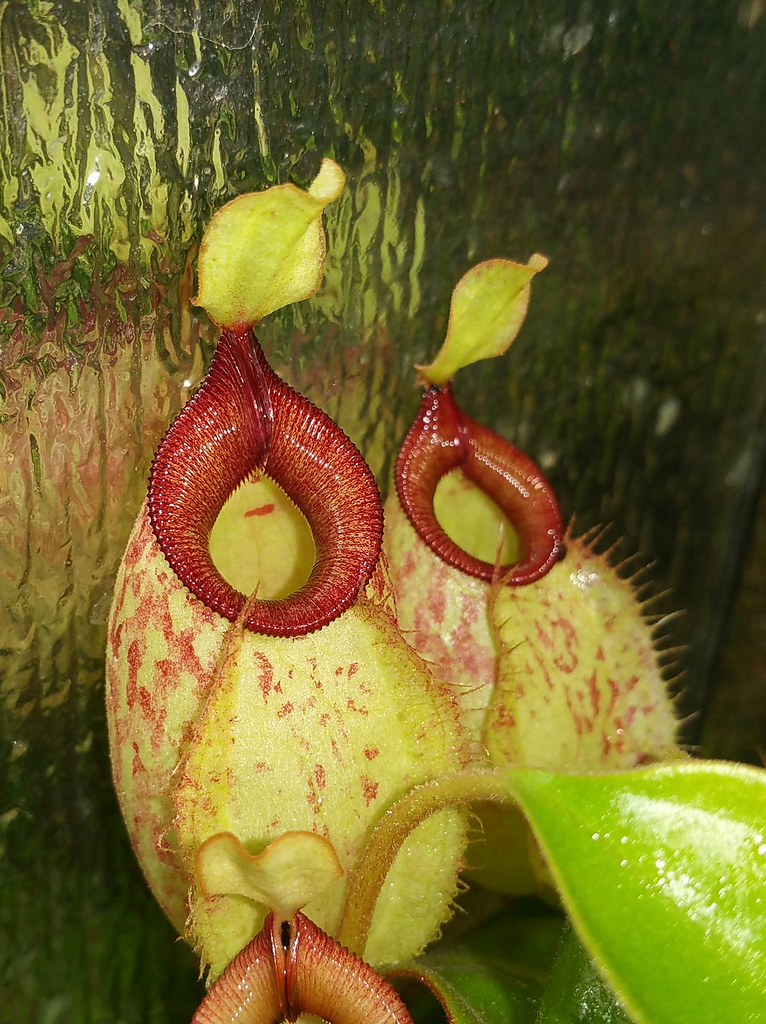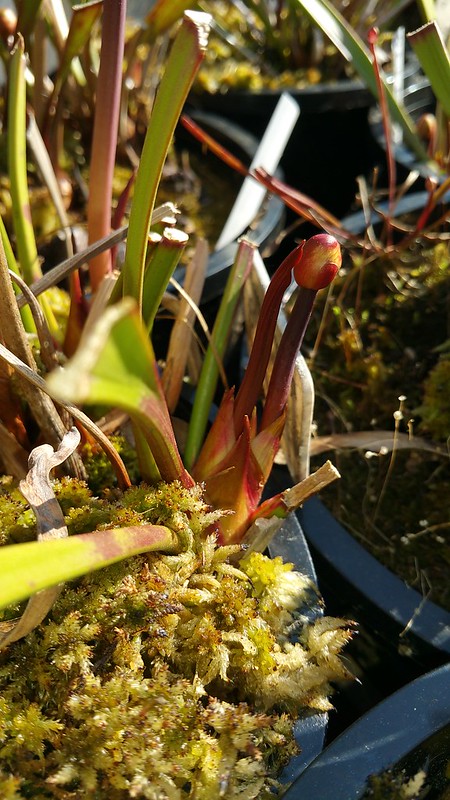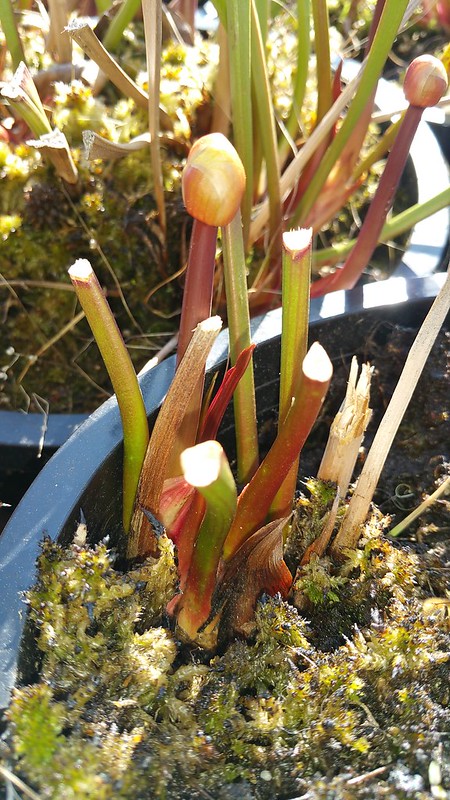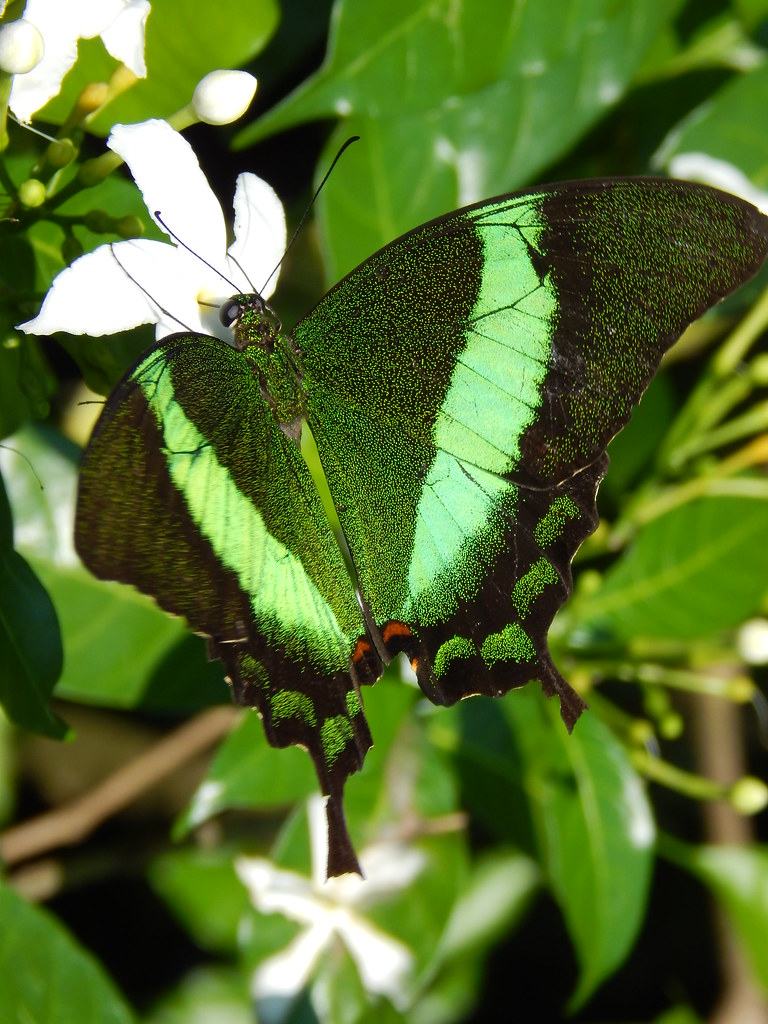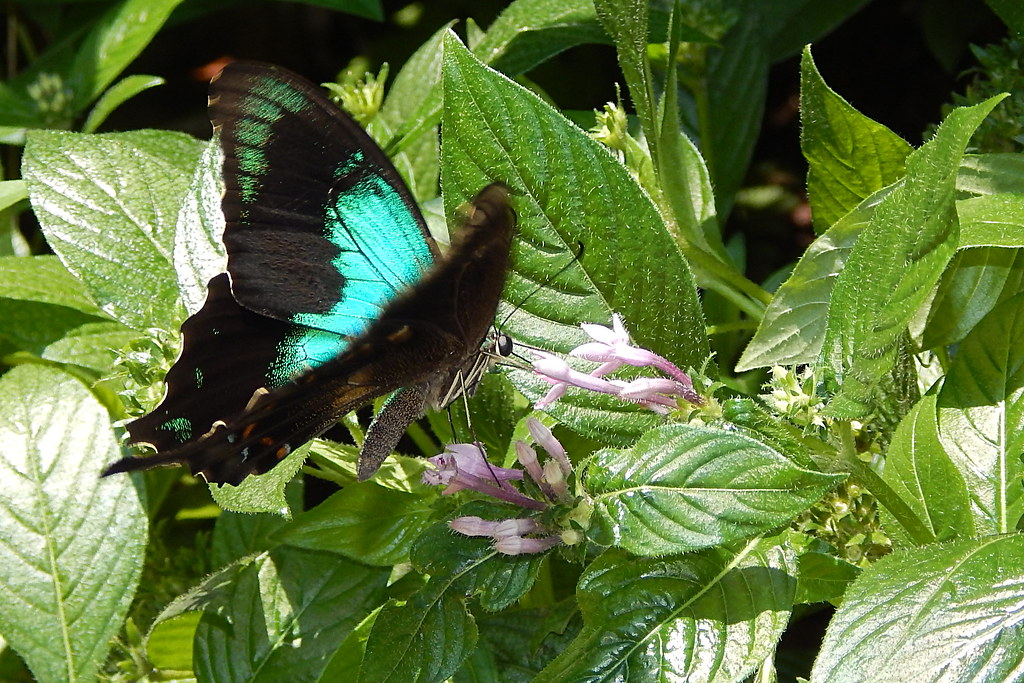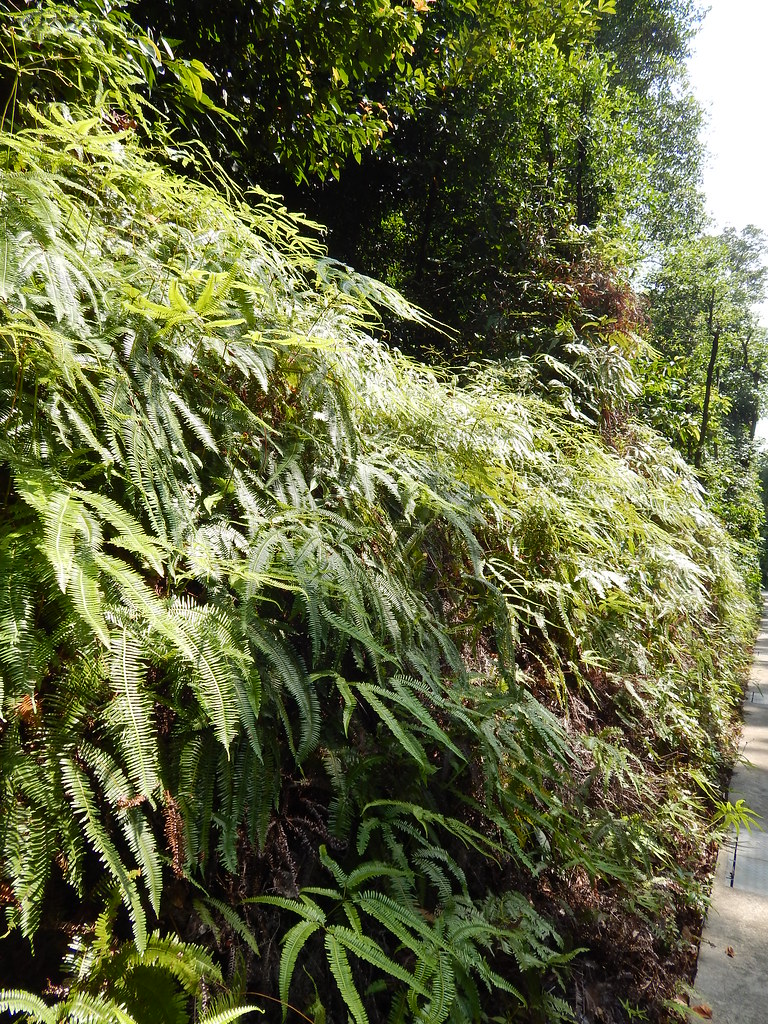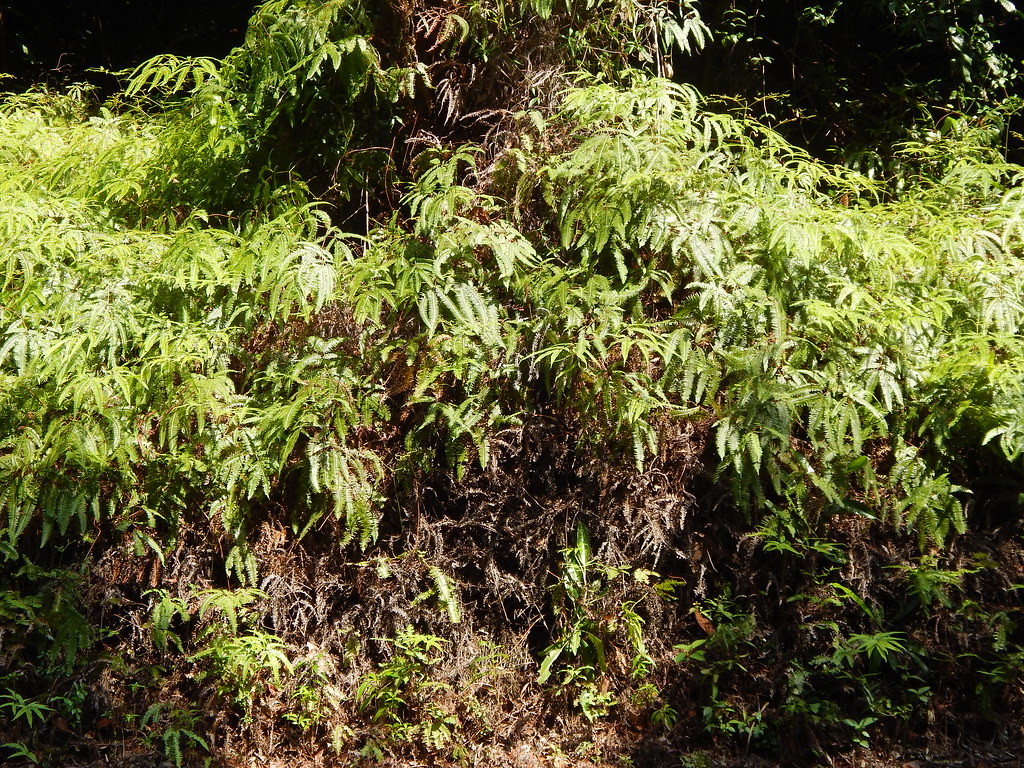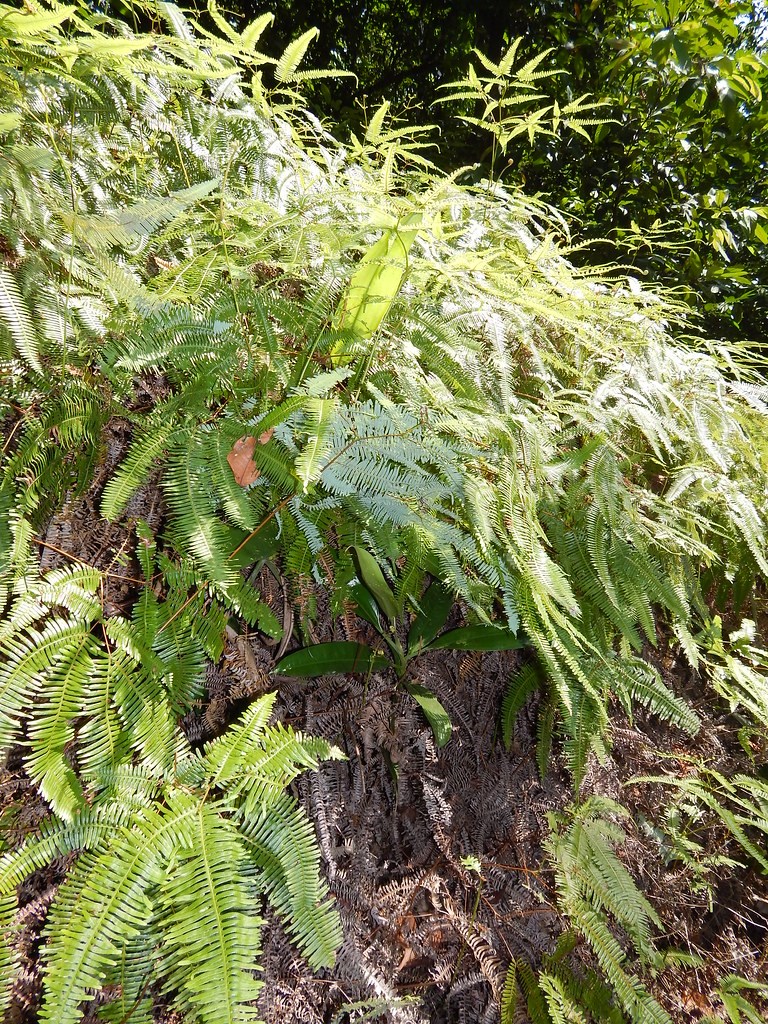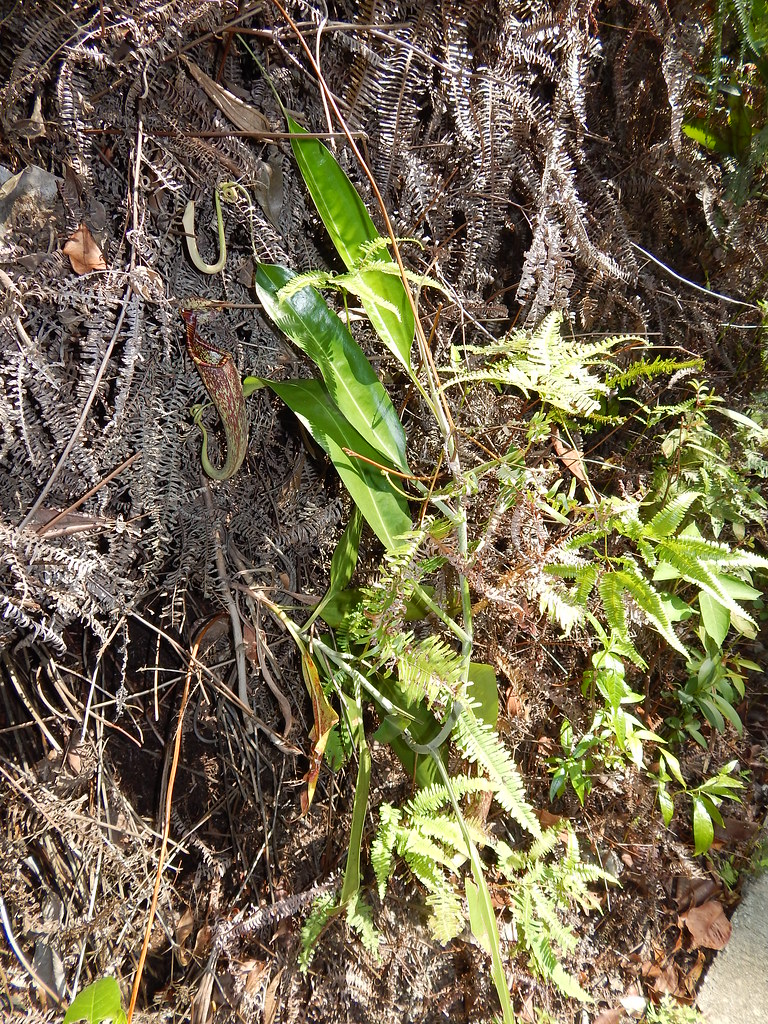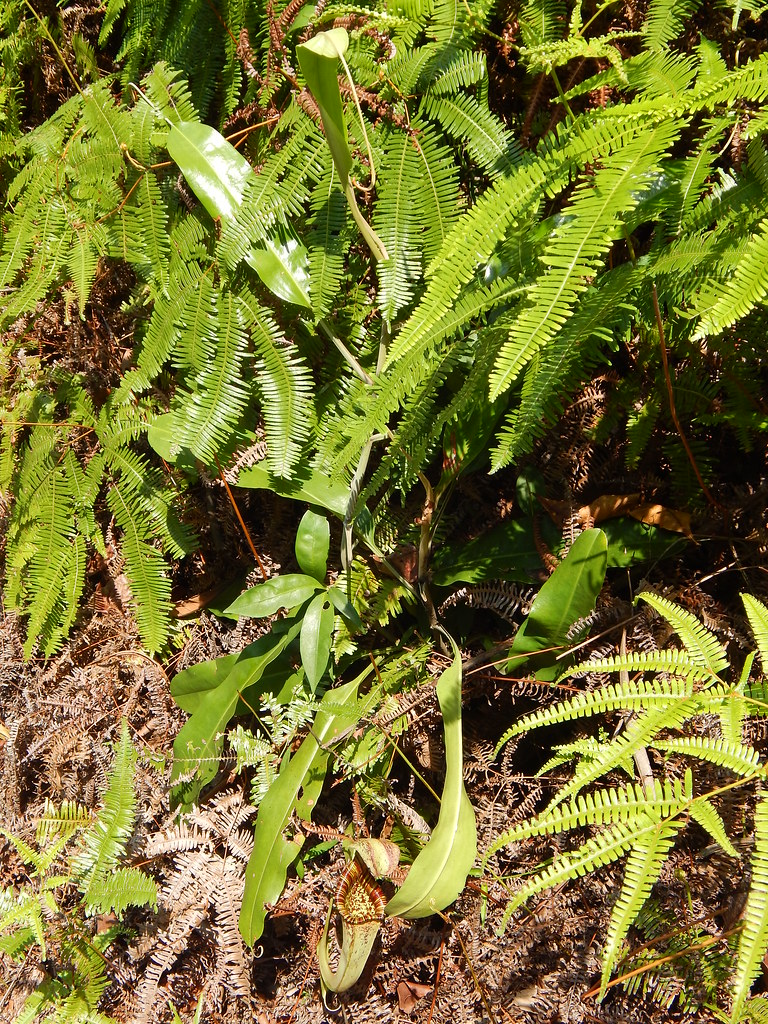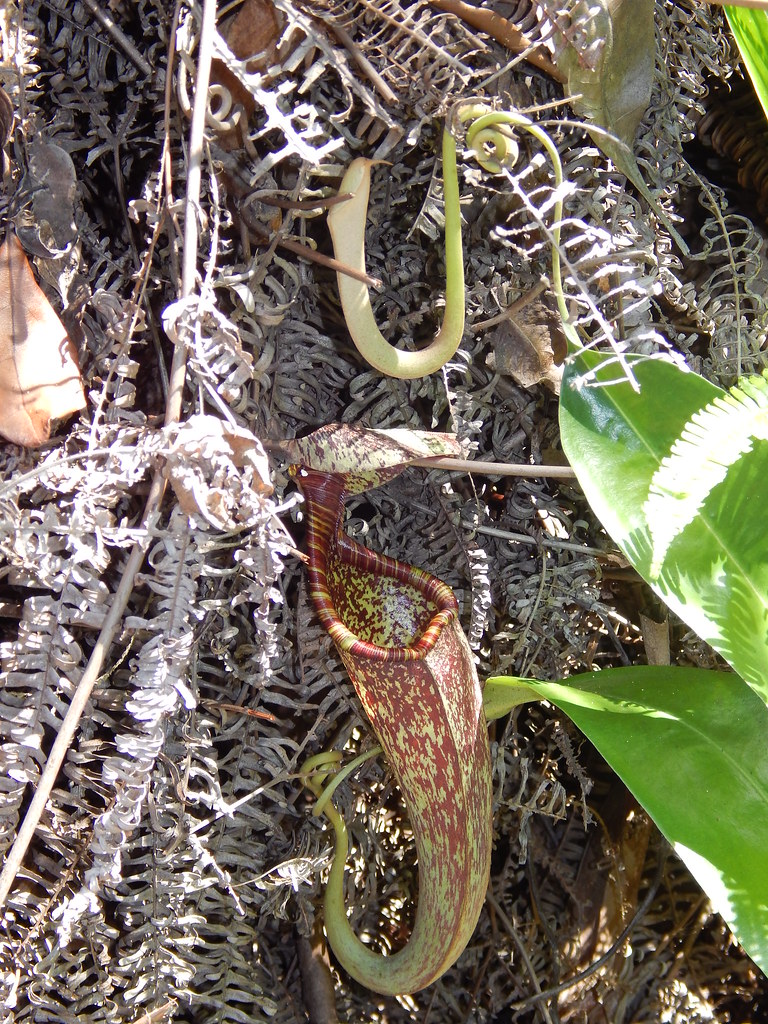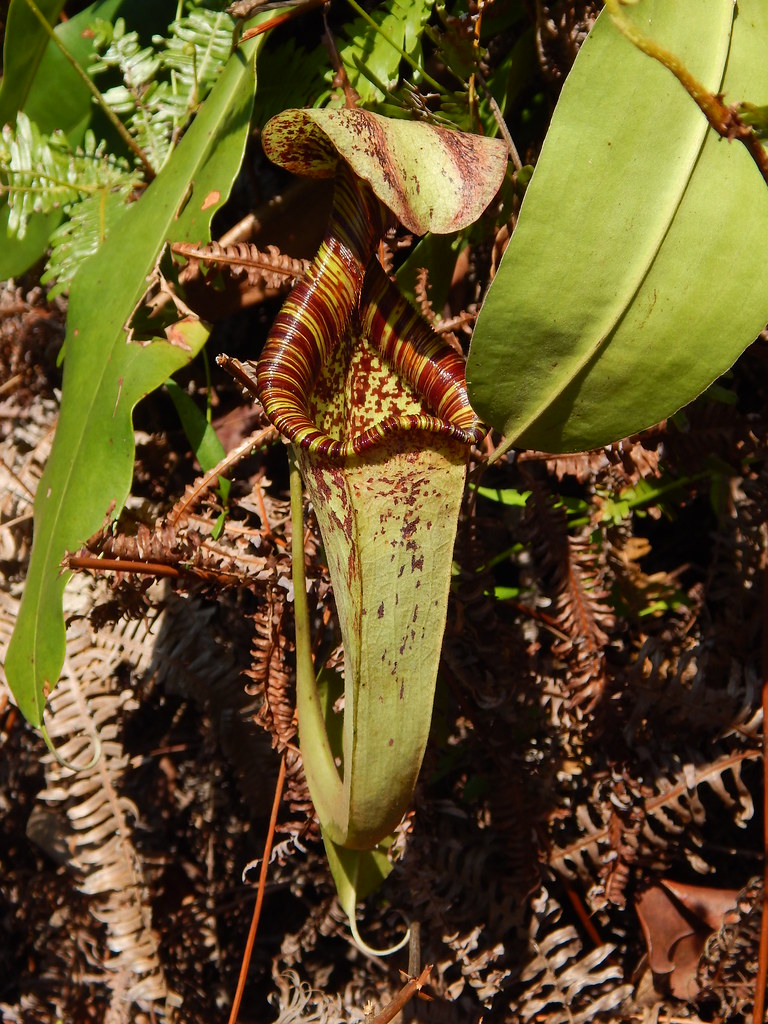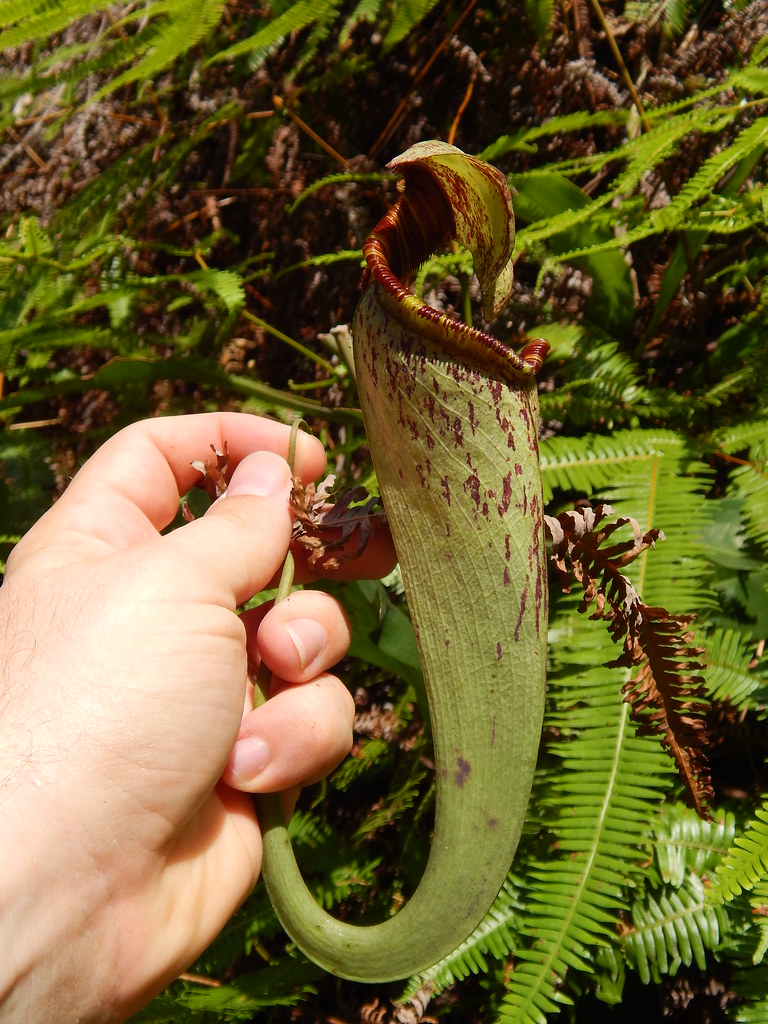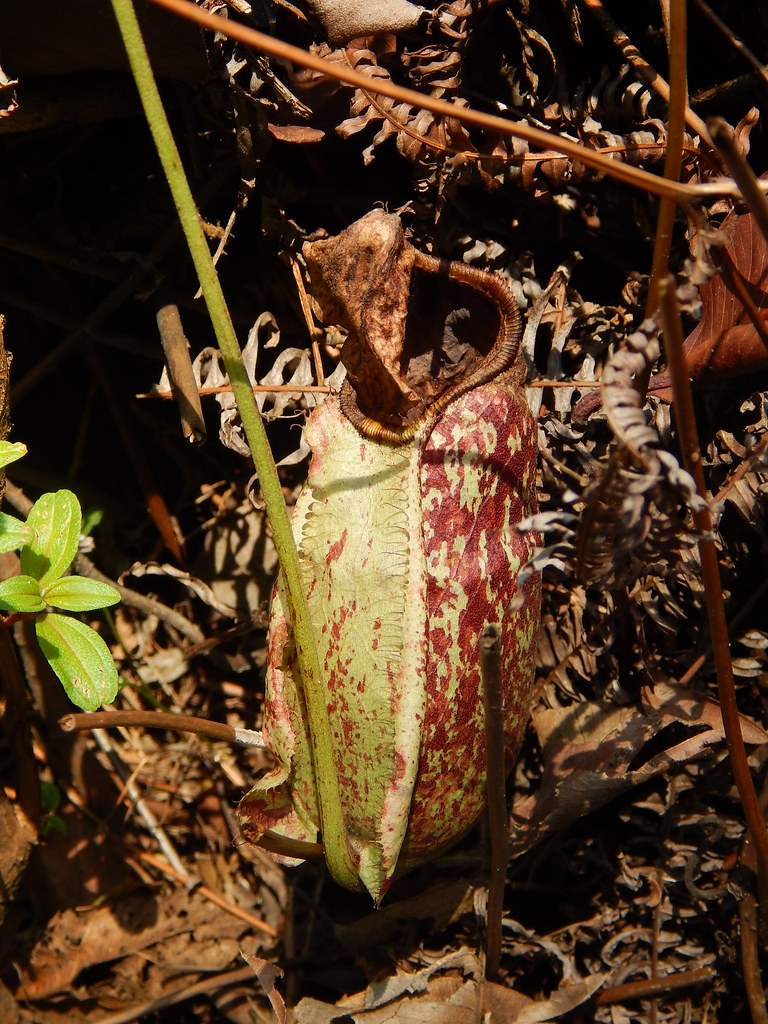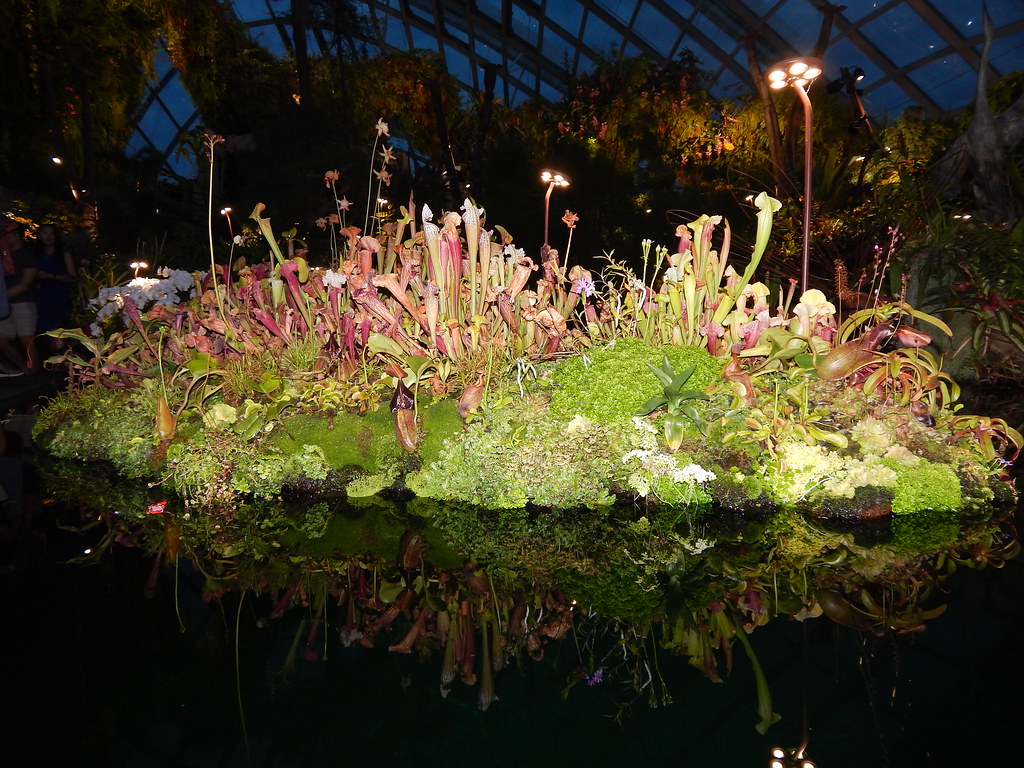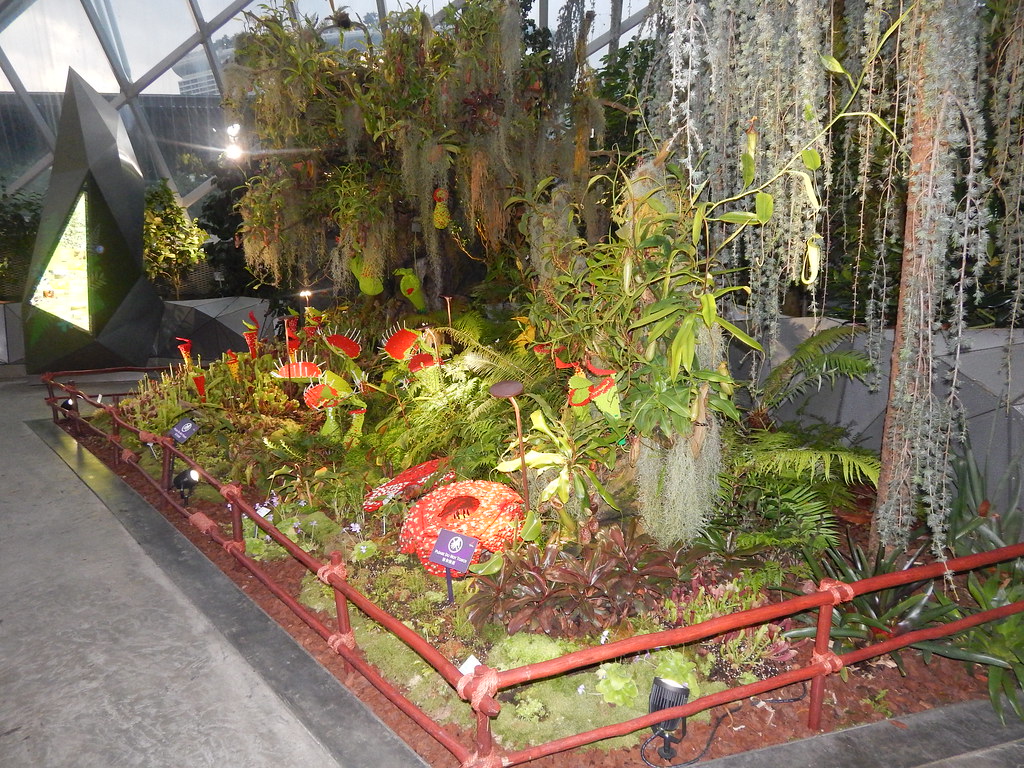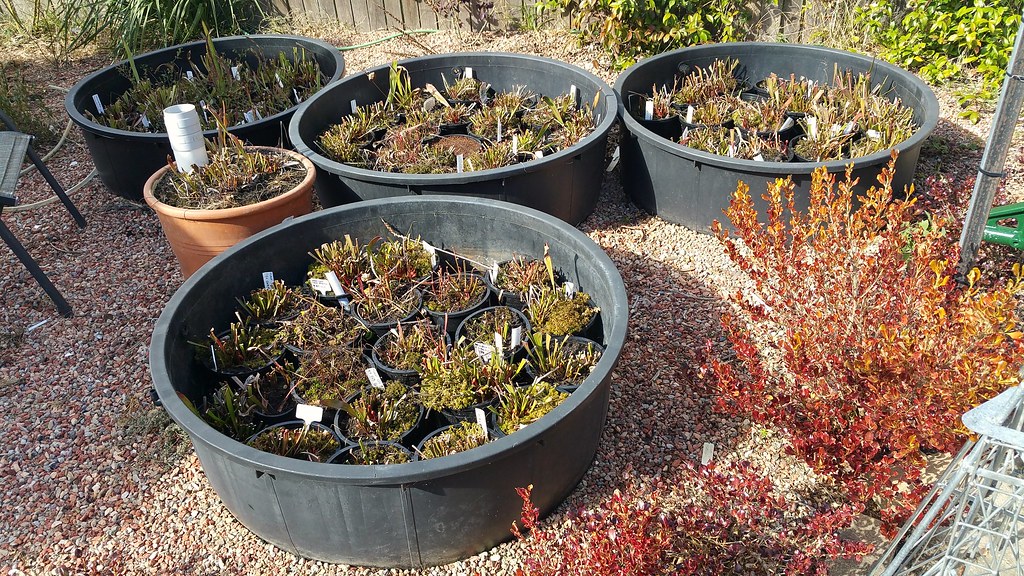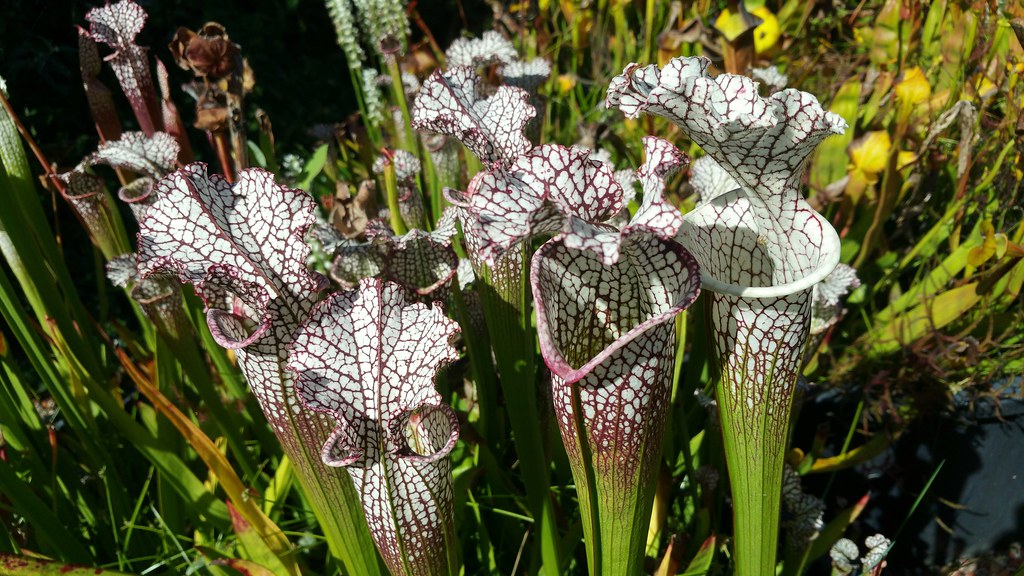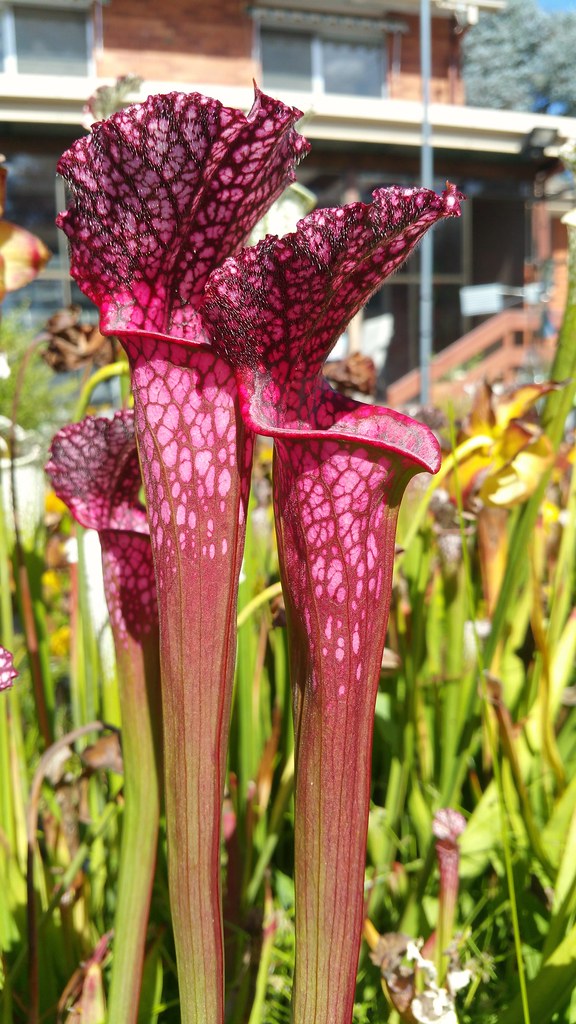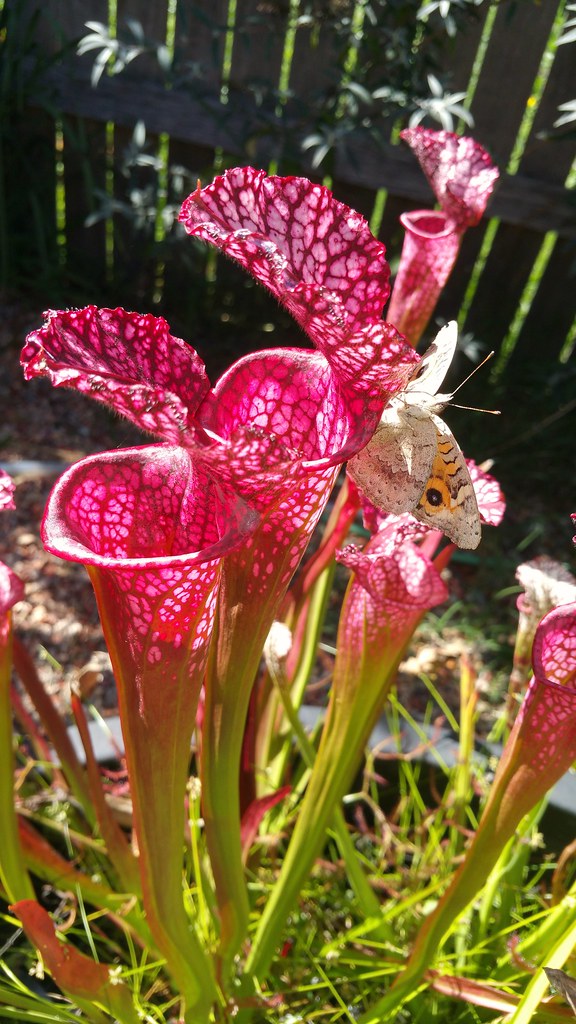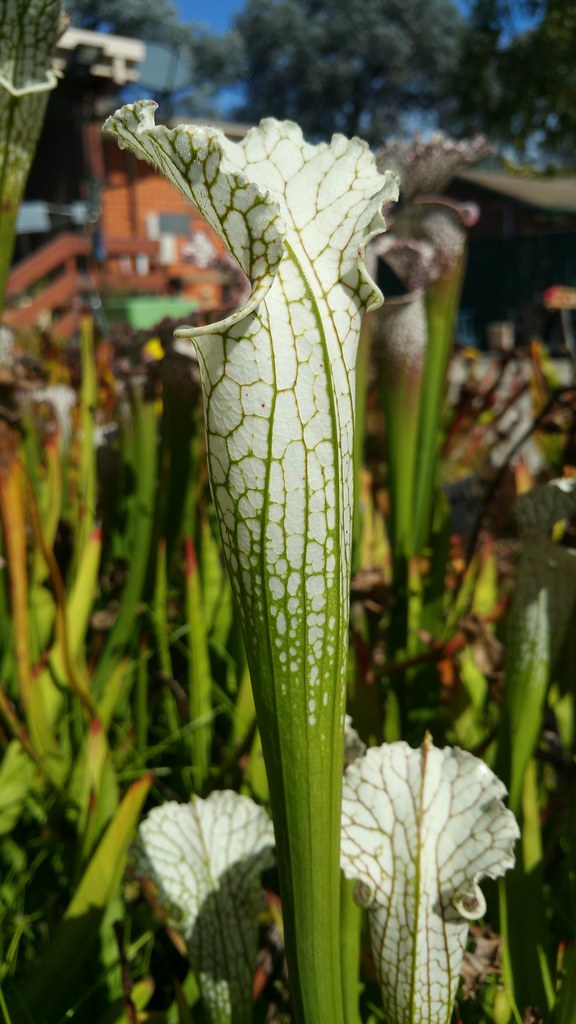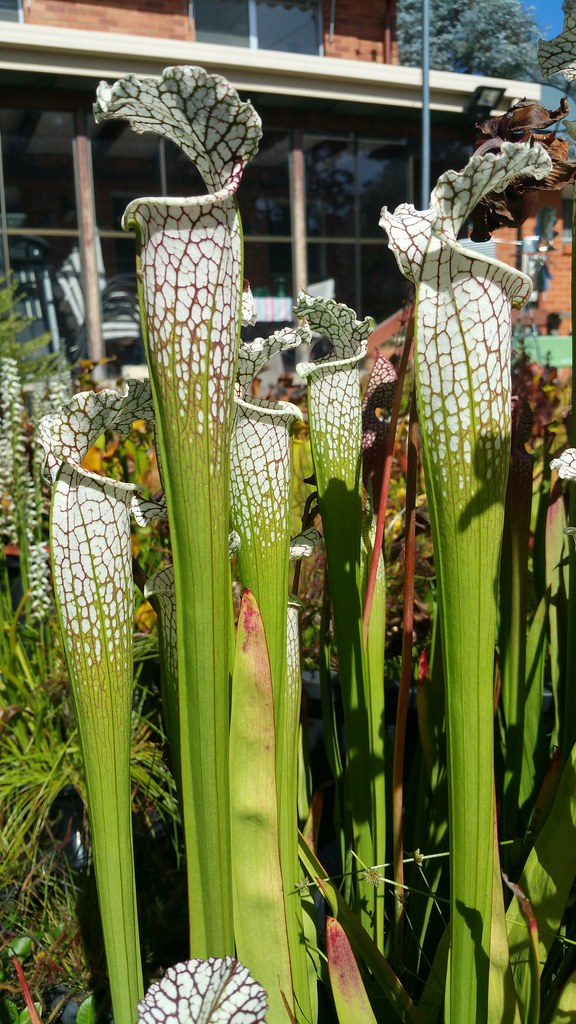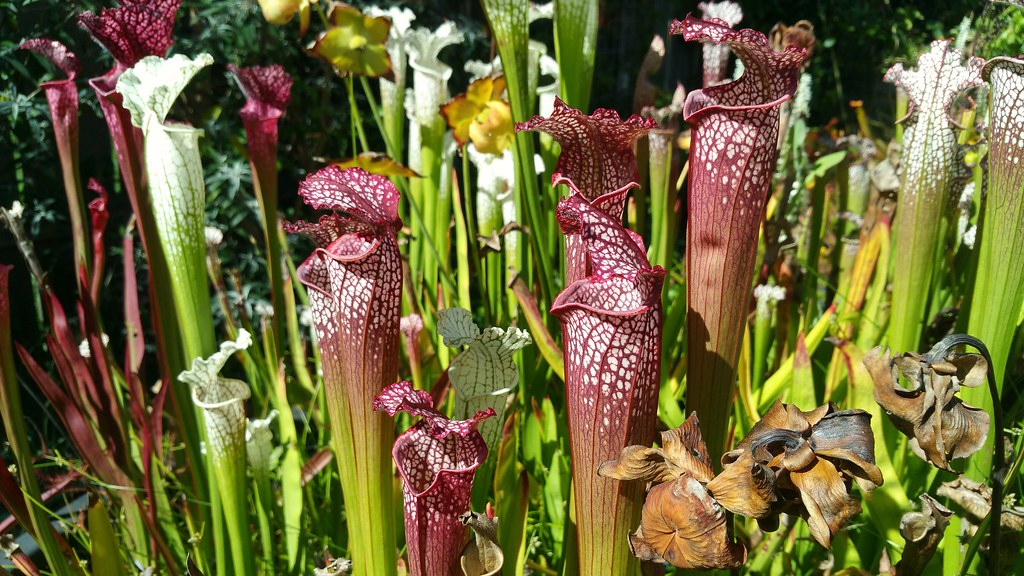Just a quick post to show some of the pitchers in the lowland Nepenthes terrarium I set up a few years back. The amps are finally producing basals! I need to get in to do a prune and tidy up soon, so I will post a few more pics then.
Monday, September 25, 2017
Saturday, September 23, 2017
The first pitchers emerge and a hot spring day
The first pitchers of the season are beginning to sprout from the rhizomes, which is great - but it means the Sarras have broken dormancy a few weeks earlier than usual. Its been a warm winter on average here due to a string of high pressure systems over southern Australia, but that still meant some very cold nights with the clear skies. When I used greenhouses, I'd have the first pitchers appear in early September, but outside it would usually be sometime in October, so a September emergence is odd. Today is also very hot, with our garden thermometer recording 34 C as I blog this. I'm just hoping this does not mean I'll get lots of pitchers shoot up, only to have a late frost burn their tops off a few days before they open.
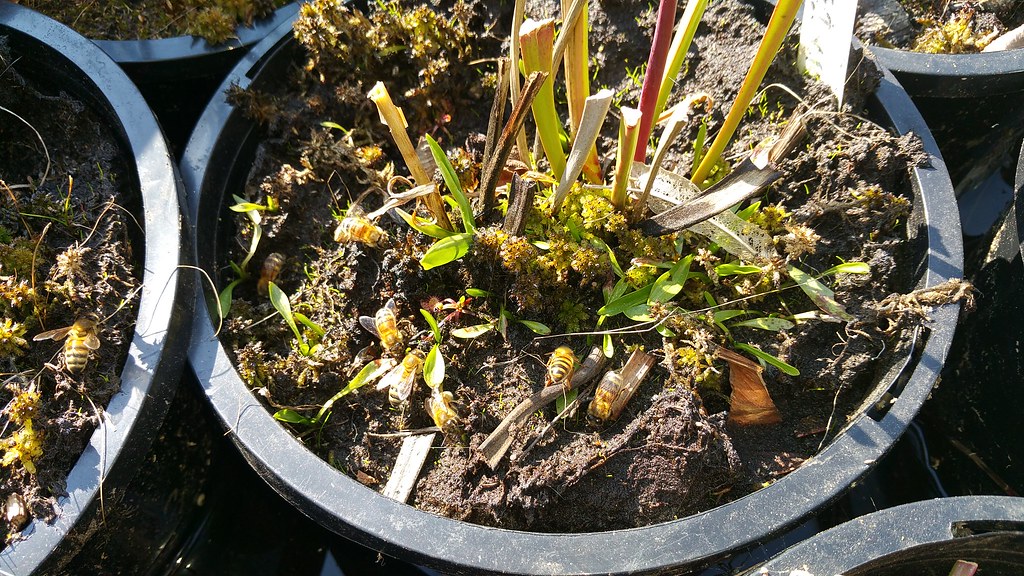
The warm and dry weather has also meant the honeybees have started raiding the Sphagnum and peat for water - again, a lot earlier than normal. Usually they start to become a bother in December.
Strange weather...
Tuesday, September 19, 2017
Drosera filiformis ssp. filiformis gearing up
I love Drosera, but not so many do very well with our cold temperatures. The typical and alba forms of Drosera capensis do well, but the red and broad leaf forms quickly departed. Drosera slackii went backwards steadily until I took pity on them and gave them to a friend in Sydney. Drosera nidiformis and D. burmanni hung on in small numbers for a long time, but eventually petered out. Drosera pygmaea did really well, but disappeared after the bog gardens went back to pots. Drosera rotundifolia also did well, but again I nearly lost them putting them into pots - their winter resting buds were hard to find while I repotted in the dark. That said, there is a new leaf visible in a photo on the blog post above (after) this one – check the photo with the bees.
Perhaps the best performing Drosera I've grown outdoors here are Drosera filiformis ssp. filiformis and Drosera binata (all forms of the latter are very reliable). Drosera filiformis is something that looks amazing when grown en masse, so I have a 200 mm pot crammed with it. Here's a photo of that pot just breaking dormancy:

Saturday, September 16, 2017
Easy to see Nepenthes on Sentosa Island, Singapore
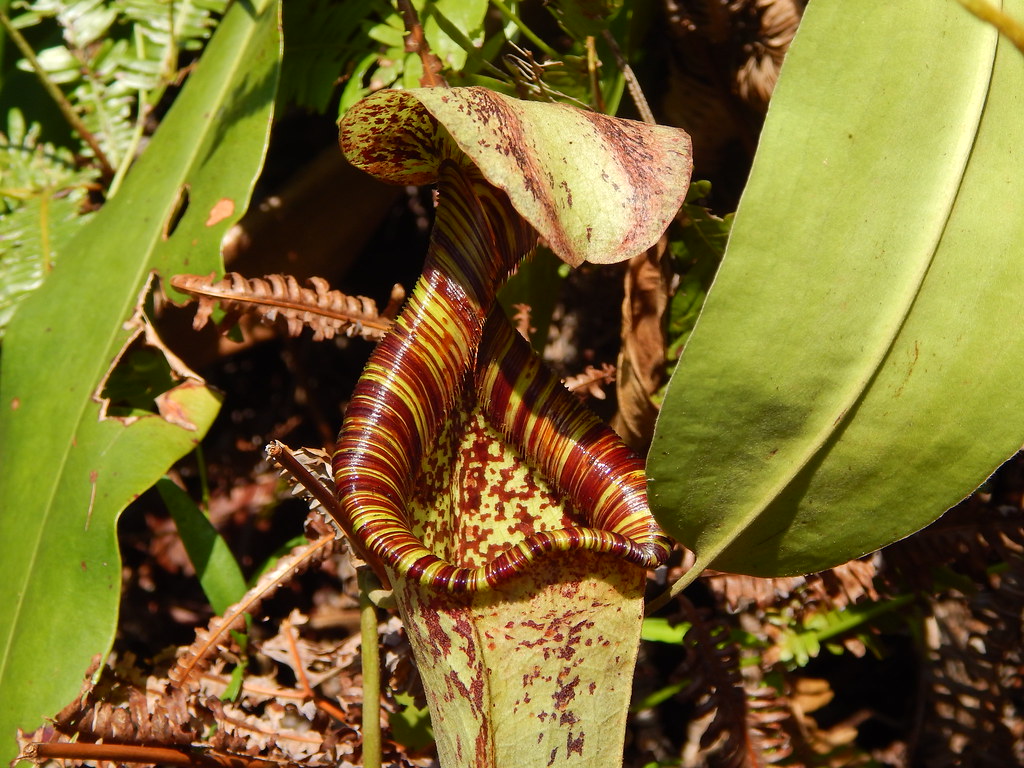
In Australia, we have a tradition called Schoolies Week, which is a celebration of finishing high/senior school. It has a bad reputation because it usually involves 17 or 18 year olds heading to a part of southern Queensland called the Gold Coast, where they partake in large volume of alcohol and get up to mischief. Nerd that I am, I instead went to Malaysia and Singapore with my father to look at butterflies and Nepenthes. I got to see Nepenthes tentaculata on Mount Kinabalu (we only spent a day there – dammit!), Nepenthes macfarlanei, N. sanguinea and N. rampsina (plus hybrids of the latter two) in the Cameron Highlands of Malaysia, and a variety of Nepethes in Singapore. A particular highlight was seeing Nepenthes rafflesiana growing on Sentosa Island in Singapore. We had no idea they were there at the time (noting this was pre- my family having internet); I spotted them from the monorail on the island. As it was getting dark, we did not take pictures at the time.
I had the opportunity to re-visit Singapore earlier this year, and went out specially to re-find N. rafflesiana on Sentosa. I first went and photographed Papilio (Achillides) gloss swallowtails in the Sentosa butterfly house, which is on the way – they were stunning, but the butterfly house itself has seen better days. This gloss swallowtail is P. daedalus from the Philippines.
Some friends and I make it a point of pronounce Achillides as Ahhh(!)… chil-ee-dees, because you have to say “ahhh!” at how beautiful they are! Above is a male P. peranthus transiens from Bali, Indonesia.
Then it was Nepenthes time. They are very easy to find; follow Imbiah Road from the Butterfly House down to the Shangri La resort, and they are about half-way along on your left, hiding in the banks of skeleton ferns.
There is a plant at bottom centre in this photo, and a few others twining their way through the ferns out of view.
Here’s another hiding under the cover of the ferns.
Habitus, showing upper pitchers.
Ditto.
And a more exposed plant.
Here’s a closeup of an upper pitcher and an undeveloped pitcher.
And detail of the unopened pitcher.
Most of the pitchers I saw were upper pitchers. They were a decent size, around 20 cm (9 inches).
I did luck upon one lower pitcher though – it was on the way out though.
Neps are protected in Singapore, and the Singaporeans take their nature conservation very seriously. I don’t have a reservation about saying how to access these particular plants, as there are a number of online guides describe how to access Nepenthes in Singapore anyway. These particular plants are very easy to see while on holiday without needing to go to extra effort just to see some Nepenthes. Bukit Timah is also a good place to see Nepenthes – I saw N. gracilis there and must have walked right past N. ampullaria – and it can be accessed easily via Singapore’s public transport system.
Another nice thing to do in Singapore is to visit Gardens By The Bay. They display some magnificent plants!
The Lego CPs and Rafflesia are cute!
My only tip with this place – try not to do it on a weekend during school holidays – our visit was spoiled by obnoxious children screaming as loud as possible to test the acoustics of the greenhouse.
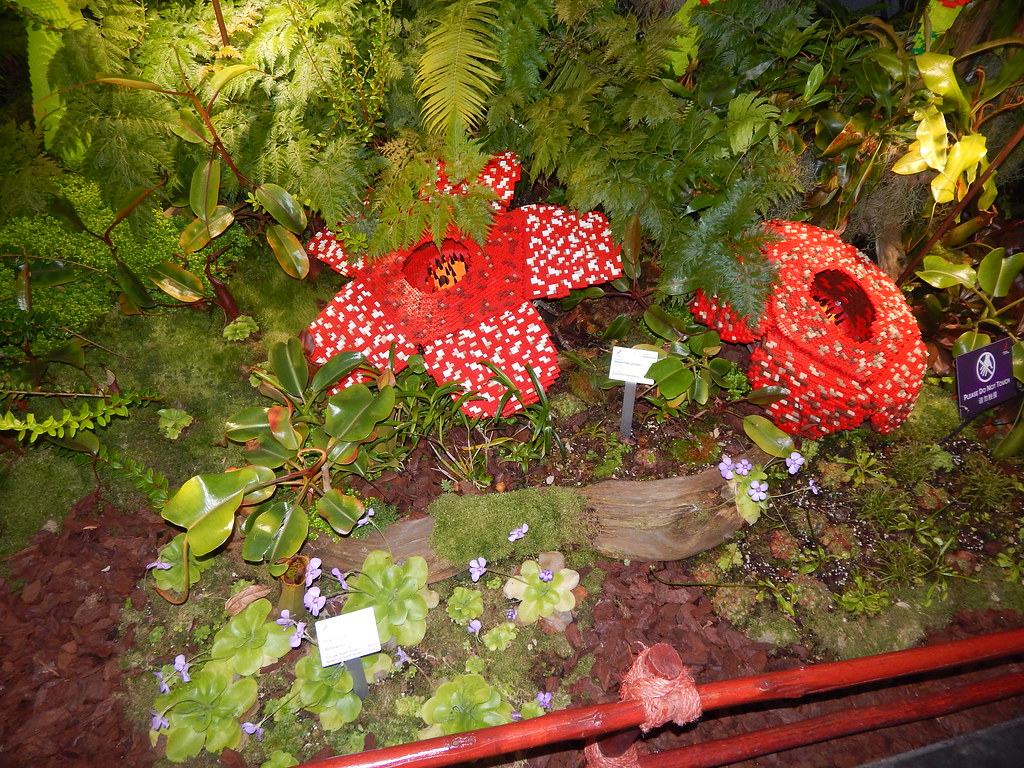
Sadly, there was not enough time this trip to see any other Nepenthes – maybe another time!
Still here and still growing…
Its been nearly a year since I last updated the blog – I’ve taken somewhat of a break with carnivorous plants to be honest, as they became a lot less enjoyable than they should be due to a few (people-based) incidents. But I’m still here and the collection is still growing – in fact, the first flower buds are beginning to appear, despite the cold (we can expect frosts up to around the end of the first week of November here).
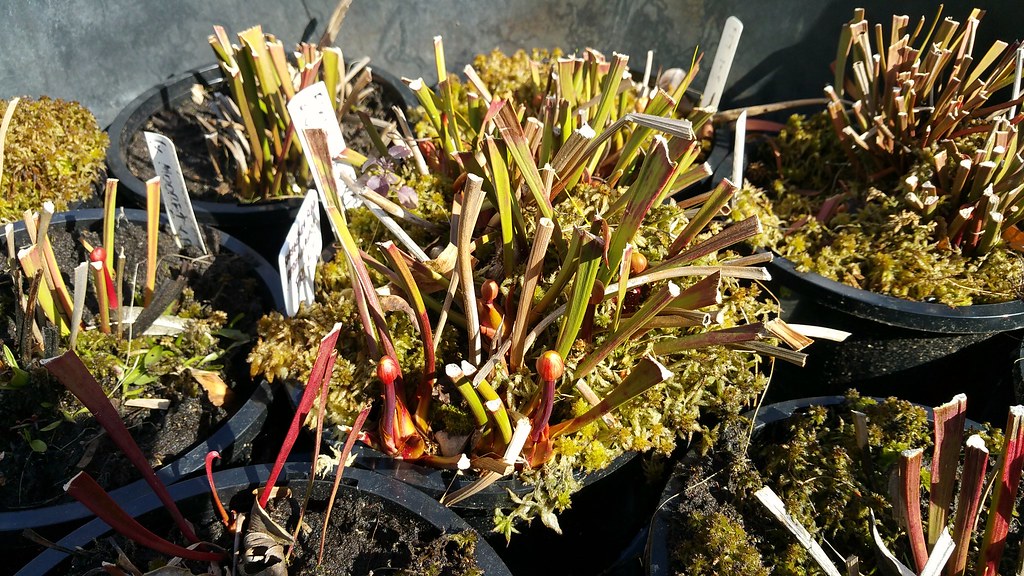
This pot of Sarracenia flava ‘FRT 1-1’ is leading the charge!
Last year was very odd – extremely wet in winter, a soggy start to spring, and suddenly hot and dry in late spring. That meant that the Sarracenia flava came and went in a matter of a week or two – the spring flies (mostly hoverflies) that make up the bulk of the prey came in one big burst before it got too dry, and everything got pitcher burn within a few days. The dry that quickly followed saw the flava go straight to phyllode production (althought I’m sure that the repotting did not help). The photos I posted to the blog last November were really all I took – I found myself away with work right when everything was looking its best, and came home to burned off plants. So there ended any motivation to do much with them except grit my teeth, water them and hope they would do better next year. And to add insult to injury, we didn’t move – which was the reason I pulled the bog gardens apart to begin with.
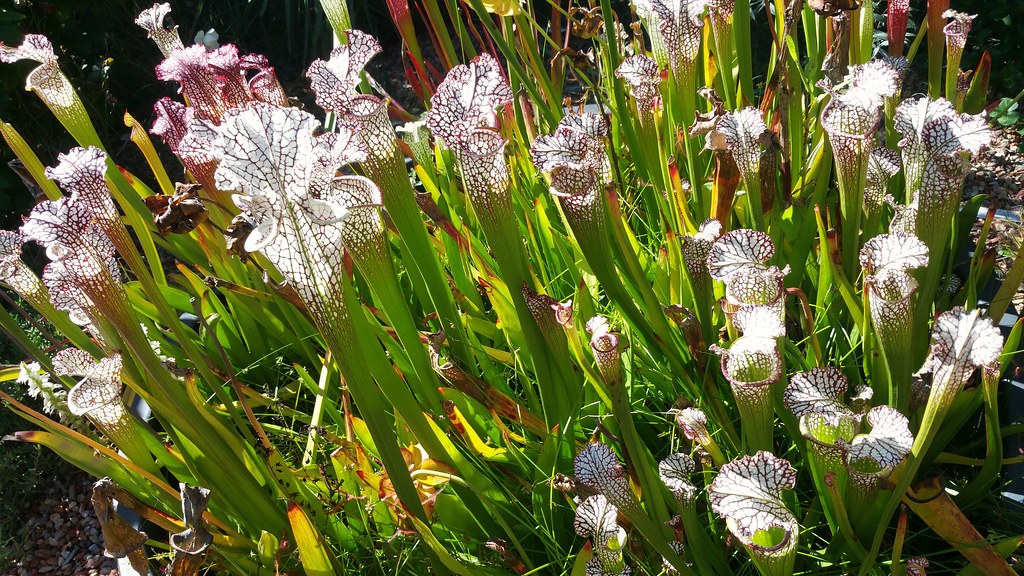
What did do surprising well – at least to my surprise (and I have to wonder what I did wrong previously – impatience maybe?) – were the S. leucophylla I got from Owen last year.
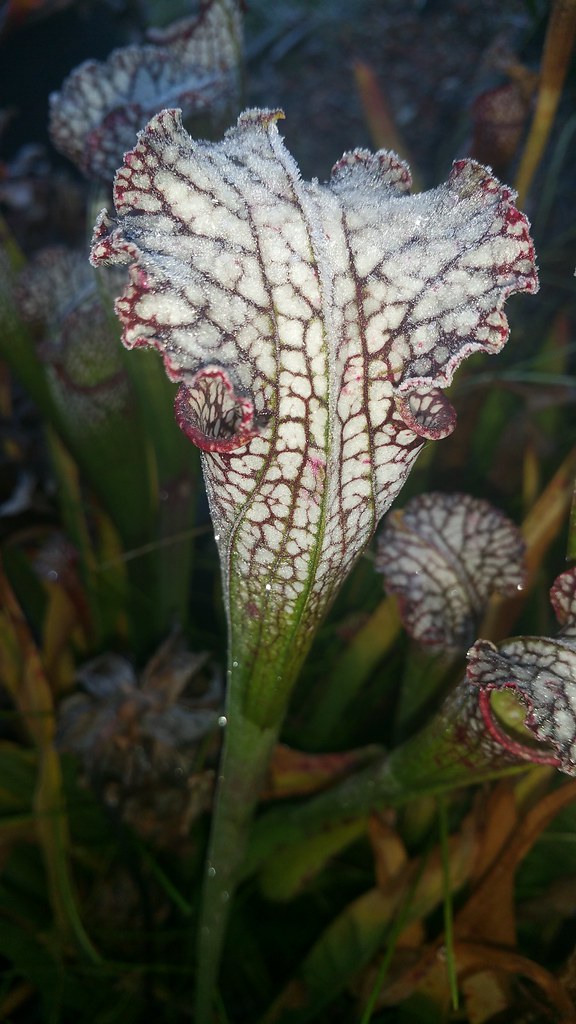
Their autumn pitchers were very impressive and lasted well into winter – see above for one with extra frosting on top.
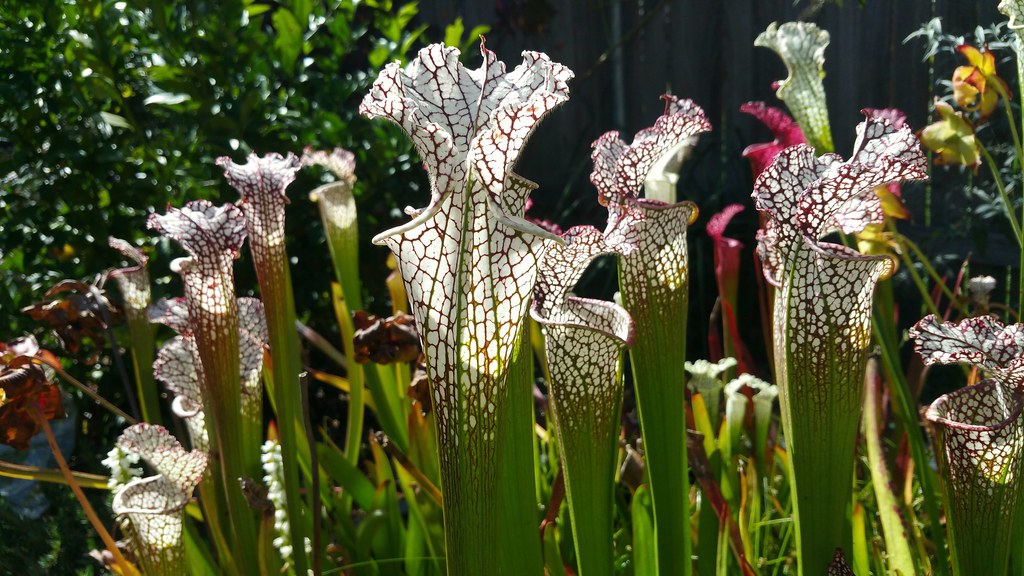
I’m hoping to cross pollinate what I have (and acquire a few more clones – Triffid Park open day anyone?) to see what I can breed up. Here’s a few more pitcher pictures from last autumn:
Nice looking group here…
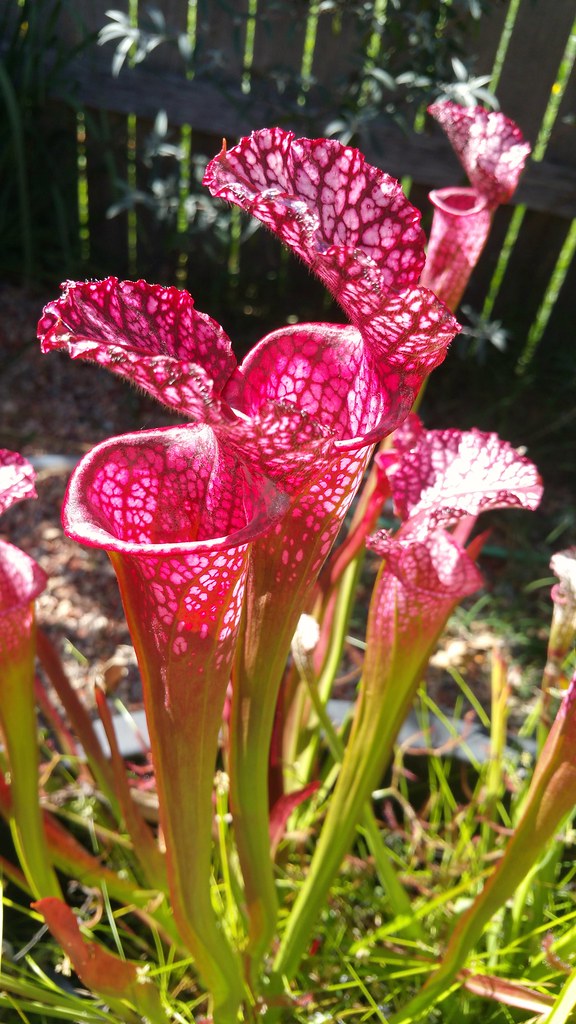
This one is a favourite - Carol and Ian English's pink variant. Very beautiful!
Maybe it needs to be crossed with FRT 1-1? Hmmm...
Like all leucos, its a pig when it comes to catching butterflies (Nymphalids and Pierids in particular) - I shooed this Meadow Argus (Junonia villida calybe) away before it could be caught.
This is another fave - its a plant Owen hopes to name at some stage (just like I should put a name on FRT 1-1). I won't give away what its called, but in Owen's words, its after a very famour musician who is "tall and white"!
I do like leucos with large white windows on the hood.
And another mixed group to close.
Well, that's it for now. I'll do my best to not be so slack this year with posting…
